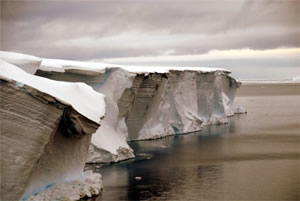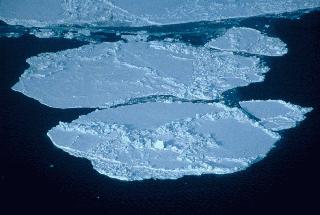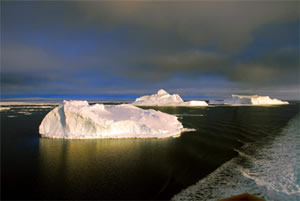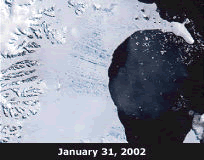Click on image for full size
Ute Kaden/PolarTREC
The Cryosphere
The cryosphere includes the parts of the Earth system where water is in its frozen (solid) form. This includes snow, sea ice, icebergs, ice shelves, glaciers, ice sheets, and permafrost soils. Approximately three-quarters of the world’s fresh water is in the cryosphere.
Some parts of the cryosphere, such as snow and the ice on ponds and lakes in mid-latitude locations, are only around during winter months. Other parts of the cryosphere, such as glaciers and ice caps, stay frozen year-round and, in fact, can stay that way for tens of thousands or even hundreds of thousands of years. Some of the ice in the ice sheet that covers most of the continent of Antarctica has been there for nearly a million years.
The cryosphere is tied to the other parts of the Earth system.
- The temperature of the atmosphere is affected by the reflectivity (the albedo) of the Earth surface. Because snow and ice are light in color, the cryosphere reflects more of the Sun’s energy back into space. When snow and ice melts exposing darker colored ocean or land, more energy is absorbed by the Earth surface and then radiated to the atmosphere, making the atmosphere warmer.
- When ice and snow from the cryosphere melt, the water becomes part of the hydrosphere. The melting can be seasonal, adding water to the hydrosphere during the summer months. For example, in the state of Washington in the western United States, melting snow and glaciers during summer provide 470 billion gallons of water. The amount of snow and ice that melts each summer is increasing because of global warming.
- Many different living organisms within the biosphere rely on parts of the cryosphere for water and habitat. For example, polar bears walk across sea ice in the Arctic as they hunt for seals, Arctic cod take shelter in areas underneath the sea ice, and some penguins rely on ice during their breeding season. There is a type of algae that lives on alpine glaciers, turning the glacial ice pink in color. Snow and ice that melt seasonally, provides the freshwater that many different plants and animals need to survive.
- The movement of glaciers and ice sheets erodes rocks of the geosphere in some locations and deposits the erroded sediments in other places, shaping the land surface. In the tundra ecosystem, permafrost soils are stiff with ice and sequester greenhouse gases from the atmosphere.















